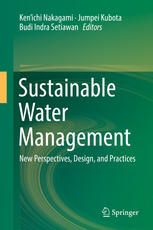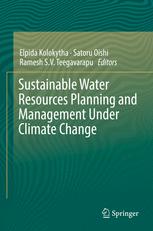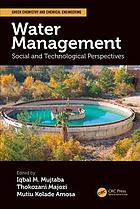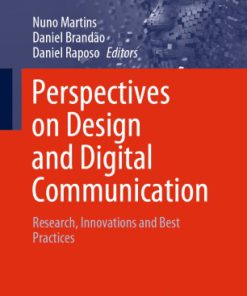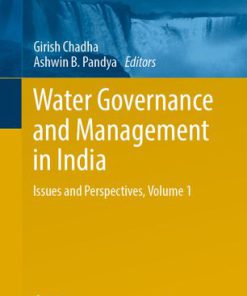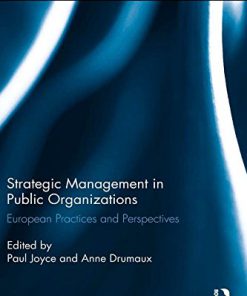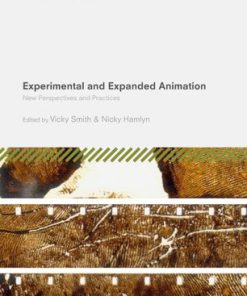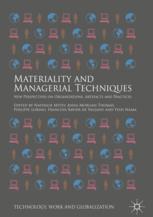Sustainable Water Management New Perspectives Design and Practices 1st Edition by Ken ichi Nakagami , Jumpei Kubota , Budi Indra Setiawan ISBN 9811012024 978-9811012020
$50.00 Original price was: $50.00.$25.00Current price is: $25.00.
Sustainable Water Management New Perspectives Design and Practices 1st Edition by Ken’ichi Nakagami , Jumpei Kubota , Budi Indra Setiawan – Ebook PDF Instant Download/Delivery: 9811012024 , 978-9811012020
Full download Sustainable Water Management New Perspectives Design and Practices 1st Edition after payment

Product details:
ISBN 10: 9811012024
ISBN 13: 978-9811012020
Author: Ken’ichi Nakagami,Jumpei Kubota,Budi Indra Setiawan
This book takes a new and critical look at the underlying factors that affect the management of water resources, and its content is guided by three important visions. With the “theory” vision, the existing knowledge system for IWRM is reorganized in order to supplement new theories related to our society and science. We then introduce two distinctive case studies on how to achieve sustainable water management. Based on the “social implementation” vision, one study is carried out by the Research Institute for Humanity and Nature on Indonesia’s Bali Island, where there is a long history of educational and inspirational local-level water management systems with multistakeholder participation. A further study is based on the “harmony between science and society” vision, and the Ritsumeikan-Global Innovation Research Organization, Ritsumeikan University, proposes innovative water recycling system for the sustainable development of Chongming Island, an eco-island that belongs to China. These two studies highlight “science with society”, a new perspective on science that could promisingly lead to more sustainable futures. This book offers a valuable reference guide for all stakeholders and scholars active in water resources management.
Sustainable Water Management New Perspectives Design and Practices 1st Table of contents:
Part I: New Perspectives
Chapter 1: New Perspectives: Reconsideration of IWRM from the Viewpoint of Design Science
1.1 Introduction
1.2 Water Crisis and Water Security
1.2.1 Aspects of the Contemporary Water Issues
1.2.2 Public Awareness of the Water Crisis
1.2.3 Water Environmental Security
1.2.4 Water Security for Disaster
1.3 Possibility of the Resurrection of IWRM
1.3.1 Background of IWRM
1.3.2 The Definition of IWRM
1.3.3 The Limits of the IWRM
1.4 Development of IWRM Toward a Sustainable Society
1.4.1 Construction of a Sustainable Society
1.4.2 Origin of the Sustainable Society
1.4.3 Objectives of a Sustainable Society
1.4.4 Local and Global Sustainability
1.4.5 Water Sustainability
1.5 Evaluation of Water Resources Development Projects
1.5.1 Objective of the Water Resources Development Projects
1.5.2 Sustainability Evaluation of the Water Resources Development Project
1.6 New Perspectives of IWRM
1.6.1 New Trends of IWRM
1.6.2 Sustainable Development Goals and Water
1.6.3 New Paradigm of IWRM
1.7 Conclusion: Possibility of Policy Science as Design Science
Part II: Design: Designing Water Resources Management with Collaborative Activities of Multistakehol
Chapter 2: Participatory Approaches to Environmental Management: Future Design for Water Resources
2.1 Introduction
2.2 Integration and the Supporting Stationarity Principle
2.3 Deadlock on the Integration Principle: The Case of the Discontinued Niu Dam Plan in Japan
2.4 Conclusion
Chapter 3: Environmental Assessment in Collaboration with Local Residents
3.1 Introduction
3.2 Conceptual Approaches
3.3 Description of the Saba Watershed
3.3.1 Geography and Population
3.3.2 Land Use and Soil Types
3.3.3 Rivers and Irrigation
3.3.4 Subak and Paddy Fields
3.4 Climate Conditions in Watershed Scale
3.5 Climate Conditions in the Field Scale
3.6 Water Balance in the Field Scale
3.7 Drought Pattern
3.8 Irrigation Water Requirement
3.9 Conclusion
Chapter 4: Local-Level Water Conservation Assessment in the Upstream Watershed Based on Land-Use Sce
4.1 Introduction
4.2 Targeted Region and Experimental Details
4.2.1 The Saba River Watershed and the Upstream Sub-watersheds
4.2.2 Meteorological and Hydrological Measurements
4.3 Hydrological Traits in the Two Sub-watersheds in the Upstream Saba River Watershed
4.3.1 Water Balance in the Two Upstream Sub-watersheds
4.3.2 Comparison of Intake Rates Between Land Uses: Coffee Plantation, Clove Plantation, and Natu
4.4 Application of a Distributed Model for Estimating Discharge in the Titab Sub-watershed
4.4.1 Basic Concept of the ICHARM/PWRI Distributed Hydrological Model
4.4.2 Spatial Data Preparation
4.4.3 Parameter for the Model in the Titab Sub-watershed
4.5 Application of the ICHARM/PWRI Distributed Model for Land-Use Change Scenarios
4.6 Conclusion
Part III: Practices in Indonesia: Participatory Approach Toward Sustainable Water Resources Manageme
Chapter 5: A Participatory Approach to Enhance Multistakeholders’ Participation in the Saba Riv
5.1 Introduction
5.2 Participatory Approach: A Principle in IWRM
5.3 Multistakeholders’ Meetings and Achievements
5.4 The Saba River Basin Community Establishment
5.4.1 Vision, Main Duties, and Functions of the Community
5.4.2 The Key Development Issues, Priority, and Action Planning
5.4.3 Membership, Organization Structure, and Funding
5.5 Summary
Chapter 6: Hydrogeochemical Assessment of the Contribution of Caldera Lakes and Paddy Irrigation
6.1 Introduction
6.2 Overview of the Study Area
6.2.1 Geography and Land Use
6.2.2 Climatology and Hydrology
6.3 General Description of the Water Stable Isotope
6.4 Sampling and Analytical Procedures
6.4.1 Sampling of Water
6.4.2 Analyses of Water Stable Isotopic Ratios
6.5 Results and Discussion
6.5.1 Caldera Lake Water
6.5.2 Paddy Water
6.5.3 River Water
6.5.4 Relationship Between the River Water and Return Flow from Paddy Fields
6.6 Conclusion
Chapter 7: Reconsideration of the Meaning of Dam Construction for Water Resources Management: Th
7.1 Introduction
7.2 Environment Impact Assessment Principles
7.3 EIA Key Issues: Reconsideration of the Titab Dam Project
7.4 Summary
Part IV: Practices in Chongming Island, China: Regional Management and Environmental Policy for Wate
Chapter 8: Current State of Water Management in Chongming Island
8.1 Introduction
8.2 Current Characteristics of Water Resources in Chongming Island
8.2.1 Analysis of Water Resource Levels in Chongming Island
8.2.2 Analysis of Water Resource Quality in Chongming Island
8.2.3 Analysis of Water Resource Levels in Yangtze Delta
8.2.4 Analysis of Water Resource Quality in Yangtze Delta
8.3 Challenges for Water Resource Management in Chongming Island
8.3.1 The Characteristics of Major Pollutant Sources in Chongming Island
8.3.1.1 Point Source Pollution
8.3.1.2 Nonpoint Source Pollution
8.3.2 The Security Requirement for Flood Control and Waterlogging Prevention
8.3.3 The Requirements for Water Source Supply Assurance
8.3.4 The Water Demands for Production
8.3.5 Water Demands for the Ecological Environment
8.4 Measurement of Water Resource Management in Chongming Island
8.4.1 Research on Water Resource Regulation Methods
8.4.1.1 Details of Water Resource Reasonable Dispatching
8.4.1.2 Research on the System for Water Resource Integrated Regulation Management
8.4.2 Construction of an Eco-Island in Chongming Island
8.4.2.1 Main Problems
Vulnerability of the Island
Saltwater Intrusion
8.4.2.2 Integrated Water System Management
8.5 Conclusions
Chapter 9: The Characteristics of Eutrophication and Its Correlation with Algae in Chongming Isl
9.1 Introduction
9.2 Materials and Methods
9.2.1 Geographical Site
9.2.2 Analysis of Samples
9.2.3 Statistic Analysis
9.3 Results and Discussion
9.3.1 Spatial and Temporal Variation of Physical Factors
9.3.1.1 Temperature
9.3.1.2 pH
9.3.1.3 DO
9.3.1.4 Turbidity
9.3.2 Spatial and Temporal Variations in Nutrient Concentrations
9.3.2.1 TN
9.3.2.2 TP
9.3.2.3 Ammonia-Nitrogen
9.3.2.4 Nitrate-Nitrogen
9.3.2.5 DOC
9.3.2.6 Chl-a
9.3.3 Relevance of Chl-a and Environmental Factors
9.3.4 Eutrophication Evaluation of Main Watercourses in Chongming Island
Chapter 10: Impacts of the Development on Land Use and the Water Environment
10.1 Development Plan of Chongming Island
10.2 Land Use/Cover Change from 1990 to 2013
10.3 Water Environment and Management
10.4 Development of Chongming Toward a Low-Carbon Society
10.5 Conclusions
Chapter 11: Proposal of a New Water Recycling System Featuring “Water Reclamation and Reuse”
11.1 Introduction
11.2 Research Project “Water Reclamation and Recycling in Asia”
11.2.1 Background of the Project
11.2.2 Objectives of the Project
11.3 Reclamation and Reuse of Greywater
11.3.1 Why Greywater?
11.3.2 Water Quality of Greywater
11.3.2.1 Raw Water Quality in Domestic Houses in Thailand
11.3.2.2 Treatment of Greywater in Laboratory-Scale Experiments
11.3.3 Acceptance of Reclaimed Water in Asian Countries
11.4 Research Project “Water Reuse and Rainwater Use in University Campuses for Development of
11.4.1 Introduction
11.4.2 Raw Water and Intended Use of Reused Water in University Campuses
11.4.3 Green Building at a University Campus: Case Study at Ritsumeikan University
11.5 Eco-Houses of the Future: Enemane House Project
11.5.1 What Is the Enemane House Project?
11.5.2 Concept of the Ritsumeikan Team
11.6 Summary
Part V: Conclusions
Chapter 12: Conclusions: The Future of Sustainable Water Management
12.1 Introduction
12.1.1 Propositions
12.1.2 Scenarios
12.1.3 The Politics of Water Management
12.1.4 The Evolution of Water Management Practices
12.2 Integrated Water Resources Management
12.2.1 Governance
12.3 The Future of IWRM
12.3.1 A Watershed Approach
12.3.2 The Messages in This Book
12.4 Conclusions and the Future
People also search for Sustainable Water Management New Perspectives Design and Practices 1st :
sustainable water management practices
sustainable water resources management springer
sustainable water projects
sustainable water and wastewater management
environmental sustainability water
Tags:
Ken ichi Nakagami,Jumpei Kubota,Budi Indra Setiawan,New Perspectives
You may also like…
Education Studies & Teaching - School Education & Teaching
Management Education in India Perspectives and Practices 1st Edition Manish Thakur
Engineering
Uncategorized
Water Governance and Management in India Issues and Perspectives Volume 1 Girish Chadha
Politics & Philosophy - Social Sciences
Business & Economics - Management & Leadership


